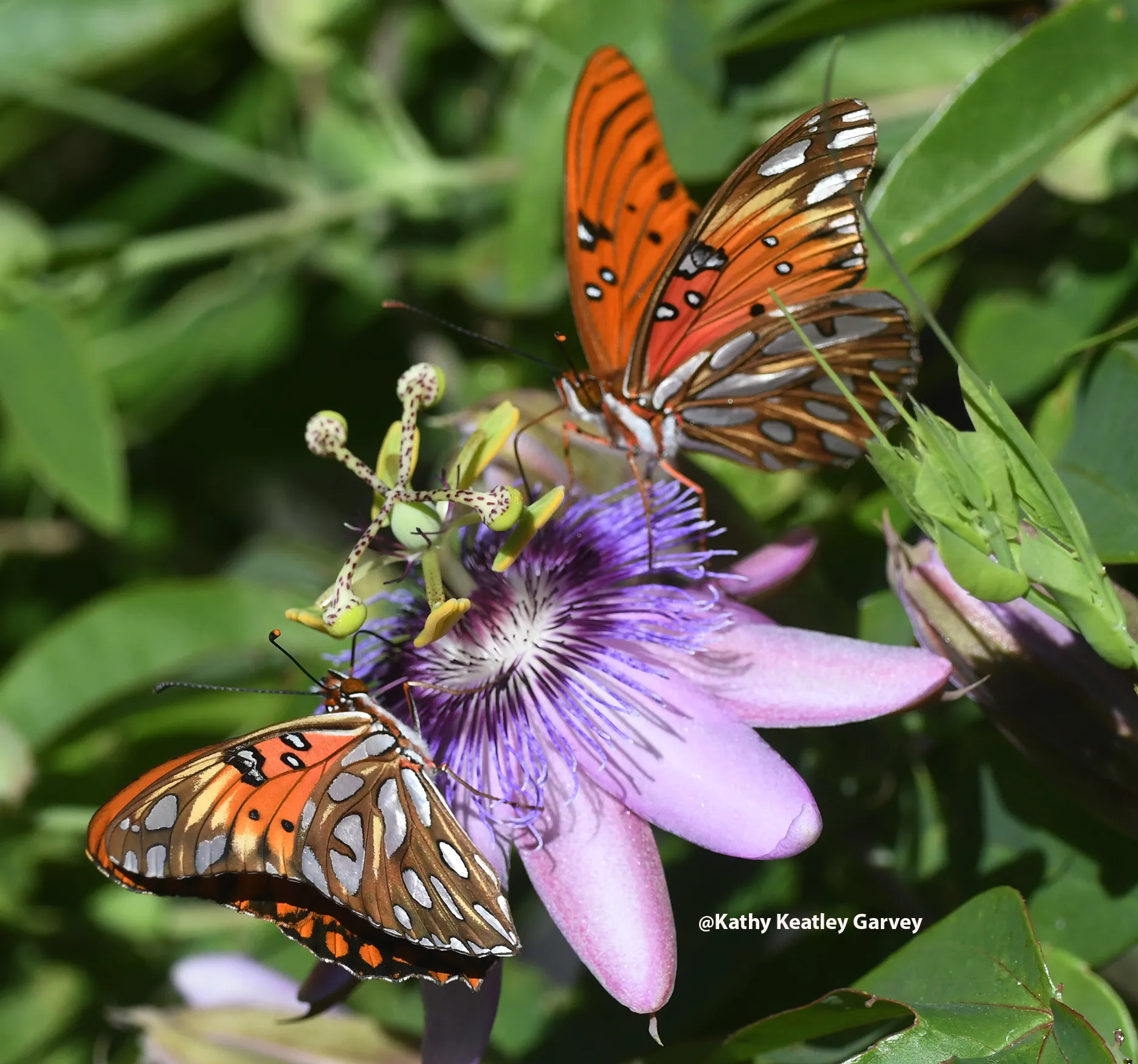The Host Plant Is Just That--A Host

The Gulf Fritillary, Agraulis vanillae, seems like two different butterflies rolled into one. When it spreads its wings, it's as orange as a pumpkin. When it's resting, it's silver spangled, drawing the same kind of attention as a colorful flag flying in the wind.
Its host plant is the passionflower vine (Passiflora), so if you plant it, scores of butterflies will lay their eggs on it, the eggs will become caterpillars, the caterpillars will become chrysalids and the butterflies will eclose. By the end of the season your plant will be skeletonized.
Which is as it should be.
That's the look and the "lot" we want: lots of eggs, lots of 'cats, lots of chrysalids, lots of butterflies. And a skeletonized plant at the end of the season.

However, some gardeners like their plants better than the insects that feed on them. They manage their Passiflora with organic and chemical methods, such as Bacillus thuringiensis (Bt) or a commercial pesticide to keep off the caterpillars. Or they pick off the 'cats and kill them. "When the plant looks bad, I look like a bad gardener!"
Not our viewpoint. To survive, the Gulf Frits need their host plant.
And you really have to inquire if the Passiflora you see for sale in your local nursery has been "treated."
By definition, a host plant is a specific plant species that an insect or other organism relies on for food, shelter, or reproduction. It's the plant that an organism lives on and from which it obtains sustenance. For example, milkweed is a host plant for monarch butterflies; indeed, their caterpillars feed exclusively on milkweed leaves. Without milkweed, they would not survive. Host plants also draw other insects to the garden, including such pollinators as honey bees and bumble bees. It's a great way to support biodiversity and gain a better appreciation of insects.
The Gulf Frits mate, and flutter around our pollinator garden, sipping nectar from the passionflower blossoms, zinnias and Mexican sunflowers, Tithonia. And those caterpillars? Their appetites are insatiable! By late fall, the host plant is nothing but "bare bones," devoid of leaves and flowers. It did its work, the hostess with the mostest. Next spring it will grow back, and the butterflies will return.
And bring joy to the garden.

